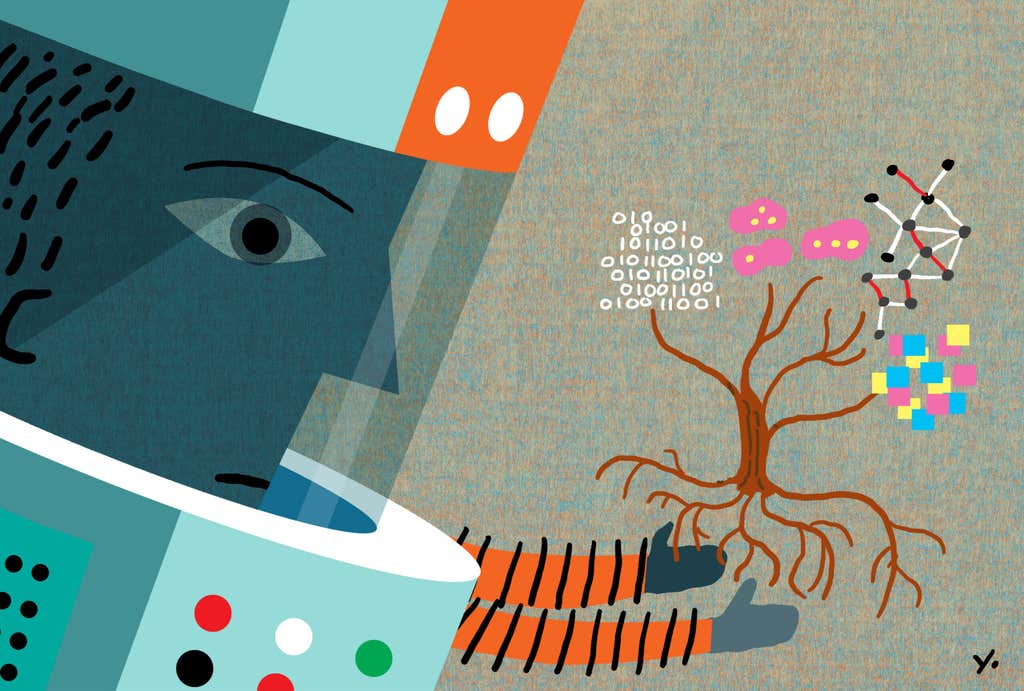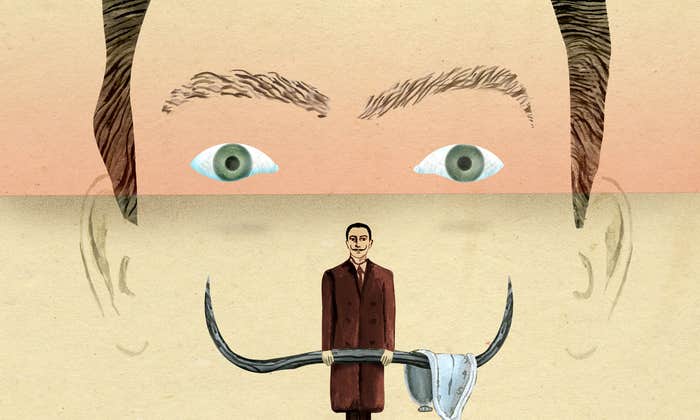
This article is part of series of Nautilus interviews with artists, you can read the rest here.
James Yang is a Brooklyn-based artist whose illustrations have appeared in The New York Times, Scientific American, and Wired, to name just a few. He’s also an award-winning children’s book author with three titles under his belt and a self-described “science-fiction nerd.” Yang’s commissions often tackle real-world issues, but invite viewers to reflect on them—and themselves—from a more whimsical perspective. Which was why Nautilus decided he was the perfect fit to illustrate the cover of the magazine’s 50th print issue and its “50 Facts So Romantic” feature.
Yang was kind enough to sit down for an interview via email and answer our questions about his creative process, what science can learn from art, and the rise of artificial intelligence (he also gave us some great sci-fi recommendations).
When did you decide pursuing art was the path you wanted to take? Was there a “eureka moment,” or was it more of a journey?
There were a couple clues early on: In second grade my art school teacher told my parents that she couldn’t teach me anything because I already knew more than her, so my parents decided they had to support me creatively. In high school in the 1970s, a former student, Stan Watts, had made it huge as an illustrator in L.A. and came to art class talking about the life as an illustrator, and it sounded very exciting. That was the moment I decided illustration was the life for me.

In addition to our cover, you created the illustrations for Nautilus’ “50 Facts So Romantic” feature, which takes its title from a Jules Verne quote. Has science fiction inspired any of your work or influenced your style?
I was a big science-fiction nerd and loved short story anthologies—Ray Bradbury, that sort of thing. Arthur C. Clarke was my favorite, and I was the biggest Star Trek (the original series) nerd. A lot of the visual language of The Jetsons seeps into my work, and I love creating fanciful robots or devices for metaphors.
Was there any particular fact on the list that you found particularly surprising?
How long sharks have existed in pretty much their same form. I kind of knew it, it makes sense now when looking at them, but that was a big surprise.

A lot of people think of science as the discovery of knowledge about the natural world, but an equally important component of science is the transmission of that knowledge. Your artwork brilliantly communicates complicated topics with simple, evocative imagery. Walk us through your process.
Thank you! I’ve always been drawn to simpler graphic ideas even as a child because they seemed so smart. The best metaphor I can use for ideas is that they are like jokes which don’t have to be funny. So a lot of my ideas after reading a story start with, “the timelessness of sharks is like …” and then I finish out the image.
I’ll quickly do thumbnails of whatever pops into my head even if they don’t make sense then start selecting the ones which have more promise. The sketches are then scanned as a template, and I have a selection of custom brushes and textures which I use to create the final image in Photoshop.
I think of Photoshop as a silk screen process on steroids, which helps me wrap my head around the program. All the elements are on different layers, which is a huge benefit because I’m constantly changing my mind about color or compositions.
Do you see any parallels between your own creative process and scientific discovery?
We hope you enjoyed a taste of Nautilus’ signature writing, on us.
To continue reading this interview and see more of James Yang’s artful illustrations, please log into your account or become a Nautilus member now.
Check the Nautilus Shop for a print of our 50th issue signed by James Yang.
Interview by Jake Currie.
Lead image courtesy of James Yang.
























